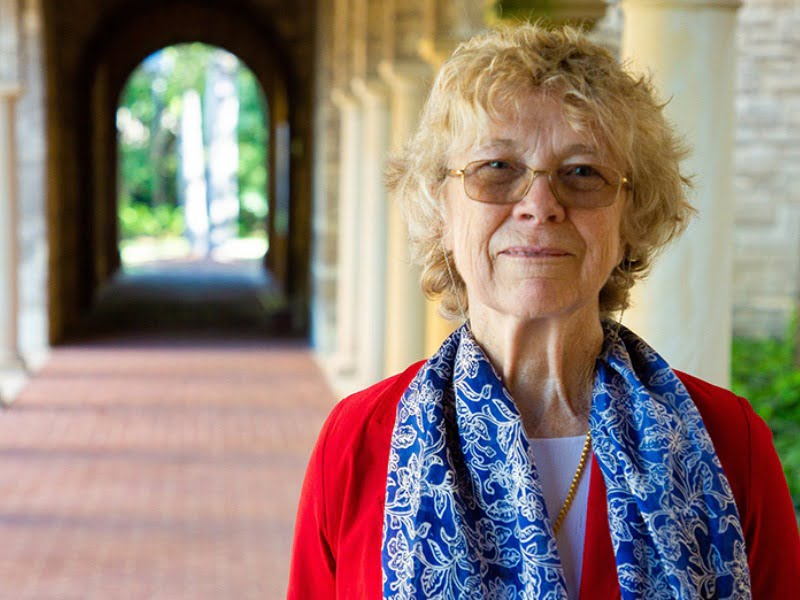Australians know all too well the tyranny of distance – it is part of our psyche and has helped shape our ability to overcome challenges many of our international counterparts would have never encountered.
An island nation, distanced from the world’s business and cultural epicentres, our best and brightest have had to be creative when forging new pathways.
Trailblazing mathematics scholar, emeritus professor Cheryl Praeger, recently awarded the Companion of the Order of Australia for her work in the field of mathematics over many decades, was at the pinnacle of her career in the 1970s when she encountered her first barrier to success.

Following a stint at Oxford to complete a PhD and long before the internet (or even inexpensive telephone calls), Prof Praeger returned home and instantly felt the distance from international colleagues and being away from where it was all happening.
“At the time, Australians were very different to those overseas. I’d talk to graduates and they would play it cool and not want to talk about their work, which meant it was hard to collaborate,” Professor Praeger said.
“I was dependent on keeping those links with colleagues internationally, and after getting married and having a couple of kids, I felt like I was losing contact with where it was all happening.”
Professor Praeger spoke with InnovationAus Publisher Corrie McLeod as part of See What You Can Be, a series of interactive webinars championing Australia’s extraordinary female changemakers including founder of Females in IT and Telecommunications (FITT) Ann Moffat, science futurist Dr Catherine Ball and finance academic Dr Priya Dev, who are blazing new pathways across the STEM sector.
Collaborating with contemporaries scattered across the globe meant Professor Praeger’s joint research was conducted via sea mail, an experience that seems quaint in today’s time of remote work and Zoom meetings.
It meant a two-month turnaround waiting for a letter to get somewhere, for someone to think about it and then write a letter back. “So, I was doing many different research projects with many different people, but it was hard work and I felt left out,” she added. “These days it would have been quite different.”
A supportive husband, and mother and mother-in-law who would share helping with the children, enabled Professor Praeger to take a six-week research stint at Cambridge, a critical step in her career.
“It was a game changer to form new research links, intensely focus on one of the most important research projects of my life, meet new people, give lectures and attend research conferences,” she said.
Throughout her career, she has broadened her research scope, which has been invaluable in having input into curriculum development, supervising PhD students, and eventually moving into computing through computer algebra and randomised algorithms.
“The role and responsibility of being a professor of mathematics has been to represent my discipline and ensure teaching areas were updated all the time,” she said. “Maths is never static.”
Today, women across the globe are being encouraged to embrace the visibility and strength that comes with banding together as a group in female STEM professionals.
Professor Praeger has seen first-hand the changing role of women in the sector: “It’s fairly recent that female mathematicians have been happy to be identified as women as a group, and the community as a whole acknowledges that it’s good to have this diversity and that women are welcome to the sector.”
Giving women the ability to put their gender alongside their role as mathematicians is an important choice they now have. “There are different issues that women face, like caring responsibilities and having to balance children and work, so it’s good to face these together and have the support of a group,” she said.
Professor Praeger knows only too well that without encouragement women can be put off choosing a career in STEM. By the end of high school, she knew what she really wanted to do – study more mathematics.
While supportive teachers and parents helped encourage her to take the next steps, a life-long career in mathematics was hard to imagine back then.
“I didn’t know that I would be able to get a job, but I just figured I would do mathematics as long as I could,” she said.
However, it wasn’t long before gender stereotypes kicked in and Professor Praeger was warned off her career ambitions.
“An advisor from the government vocational guidance section told me that ‘girls don’t do maths, they don’t pass, and there are no jobs’.” Determined to press on, she completed her undergraduate mathematics degree and then a master’s degree before going to Oxford to complete her PhD.
Today in Australia, Professor Praeger points to many fields where mathematics is essential to life changing developments. As well as physics and chemistry, it’s now biology and genomics, finance, agriculture, communications and computer security.
“Look at the statistics that we need to understand the pandemic and we can work out what is likely to control it,” she said.
Find out more about See What You Can Be, where insightful women share what they have learned on their STEM journey – including success stories, opportunities and barriers to entry – while encouraging students to challenge outdated stereotypes.
Do you know more? Contact James Riley via Email.
